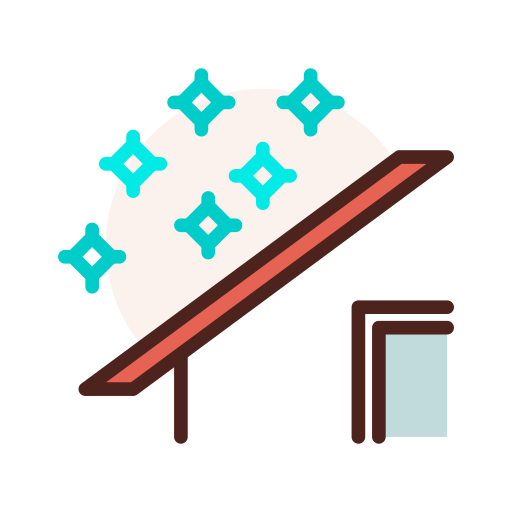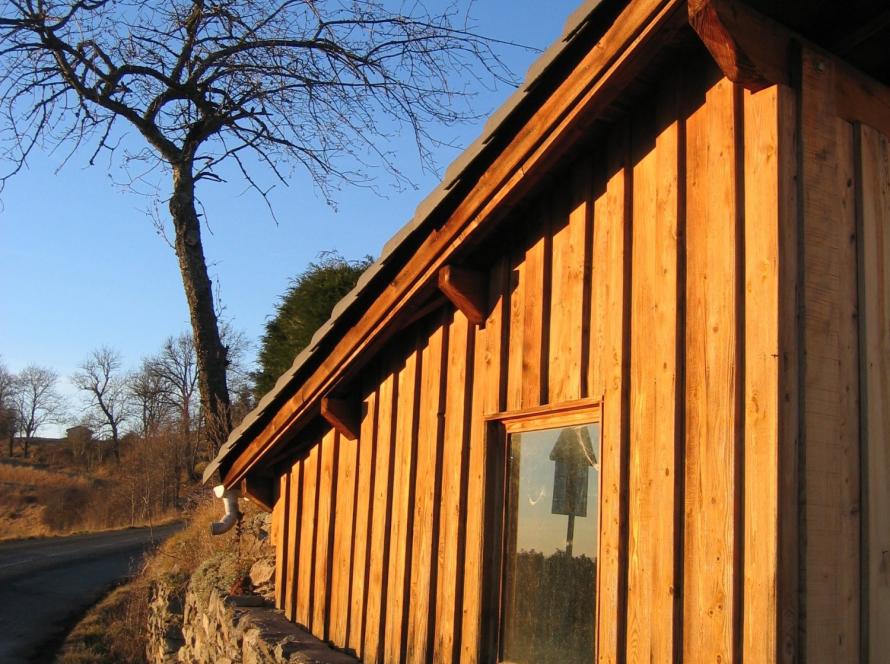Many homeowners consider exterior upgrades in the spring. It’s a great time to freshen up the outside of a home, and what better way to get a makeover than to install new siding?
If you’re weighing your options between insulated vinyl siding and other options, we have your back (or your side). One alternative to vinyl siding is insulated home sheeting.
How do you choose? In this guide, we’ll walk you through what you need to know to make an informed decision.
If you’re ready to transform your home while saving on energy costs, this is the place to explore the ins and outs of these two excellent home exterior options.

Overview of Insulated Vinyl Siding
On the surface, insulated siding doesn’t look much different than standard vinyl siding. But turn the panel over or look at the side view.
You’ll notice the insulated siding is thicker. It has a layer of foam insulation fused to the back of the panel. The foam backing, usually made from expanded polystyrene (EPS) or polyurethane, provides rigidity and thermal resistance.
This type of siding comes in various thicknesses and styles. Homeowners like it because they can choose what best suits their preferences for visual appeal and energy efficiency goals.
What Is Insulated Foam Sheeting?
Insulated foam sheeting, a.k.a. rigid foam insulation, consists of rigid panels or boards made from materials such as expanded polystyrene (EPS), extruded polystyrene (XPS), or polyisocyanurate (polyiso).
These foam sheets are installed underneath the siding. In some areas of the country, homeowners choose to cover foam sheeting with stucco, but it’s also common to cover it with standard siding panels.
With higher R-values, insulated foam sheeting offers superior insulation properties. It’s resistant to moisture, mold, and pests. Foam sheeting makes a good choice if you’re focused on improving energy efficiency.
Insulated Vinyl Siding Pros and Cons
Vinyl siding is a popular product for most homeowners who want to upgrade their home’s exterior without breaking the bank. Like any other building material, insulated vinyl siding has specific strengths and weaknesses.
Pros
This siding scores high on durability. It’s engineered to hold up under extreme temperatures, moisture, and UV exposure. Backing adds strength and impact resistance, reducing the likelihood of dents or dings.
If you’re looking for a low-maintenance exterior cover, vinyl is nearly maintenance-free. Occasional cleaning with gentle soap and water is usually all it needs.
The added layer of foam insulation improves the thermal performance of exterior walls, reducing heat loss and gain. This feature can help lower energy bills. That extra layer also means you can enjoy increased comfort year-round.
Cons
While insulated vinyl siding is available in several colors and finishes, some homeowners may find their choices limited. You can paint vinyl siding if your options feel too limited. Just make sure to follow the manufacturer’s guidelines for care and maintenance.
Installing this siding requires precision and attention to detail. Otherwise, you could have fit and alignment issues. Improper installation can lead to gaps or buckling, compromising the effectiveness of the insulation layer.
A Closer Look at Insulated Foam Sheeting
You can’t evaluate the pros and cons of one without looking at the other. Insulated foam sheeting has its own set of advantages and disadvantages.
Pros
If you’re looking for superior insulation, foam sheeting may be the answer. This product offers excellent thermal insulation. It has higher R-values per inch compared to other insulation materials.
Customization options may be a good incentive if you need more freedom. Your installer can cut and shape the foam insulation panels. That means they can fit around obstacles such as windows, doors, and electrical outlets. The benefit is a tight seal with optimized insulation performance.
Foam sheeting is water-resistant, which helps prevent moisture-related issues such as rot, decay, and indoor air quality problems.
Cons
The upfront cost of insulated foam sheeting tends to be higher than traditional insulation materials. Long-term energy savings and durability may offset the initial investment.
Proper installation requires specialized knowledge and skills to ensure effective air sealing. DIY installation is possible but may be challenging if you don’t have experience with this type of material.
What About Energy Efficiency?
Both products contribute to improved energy efficiency by reducing thermal bridging and heat transfer through exterior walls. However, insulated foam sheeting generally offers higher R-values per inch of thickness.
If you’re looking for better overall insulation performance, foam is the way to go. Even so, there are always caveats. The choice between the two materials depends on factors such as:
- Climate
- Budget
- Energy savings goals
In colder climates or areas with extreme temperature fluctuations, insulated foam sheeting may provide more significant energy benefits. Insulated vinyl siding may be sufficient for milder climates.
Durability and Maintenance
If you’re going to make comparisons between two excellent products, you can’t over-emphasize durability and maintenance.
Because of its resistance to moisture, pests, and UV exposure, insulated vinyl siding is not only durable but relatively low-maintenance. Some say it’s maintenance-free, but as we mentioned earlier, it still needs the occasional cleaning.
Standard vinyl siding already enjoys a reputation for durability, but the foam insulation backing adds an extra layer of protection. It helps prevent impact damage and warping or buckling over time.
Insulated foam sheeting is also durable and requires minimal maintenance once installed. However, periodic inspections may be necessary to check for cracks, gaps, or damage that could compromise insulation performance.
Compatibility With Existing Structures
When contemplating the choice between insulated vinyl and insulated foam, it’s important to assess compatibility. How does each material fit with your home’s structure and current exterior finishes? If you want to integrate new siding without causing problems, you’ll want to consider several factors.
Architectural Style
Insulated vinyl siding comes in several profiles, including traditional clapboards, Dutch lap, and board and batten. It’s suitable for a variety of architectural styles, from Colonial to Contemporary.
Normally, you install insulated foam sheeting underneath exterior finishes such as stucco, brick veneer, or stone. You won’t alter the outward appearance of your home.
Building Codes and Regulations
Local codes may dictate your choice. Fire resistance, wind load ratings, and energy efficiency standards usually come into play. Consult with authorities for compliance and permits.
Structural Considerations
Insulated vinyl siding is lightweight, and often, you can install it right over existing siding. It’s a practical choice for retrofitting an older home.
What About Installation?
No matter what siding product you choose, consider the installation process. Installation of either material in this guide requires careful planning and attention to detail. Here are a few points to think about:
Insulated Vinyl Siding
Measuring and cutting accurately ensures each panel fits around windows, doors, and other obstacles. To preserve warranty coverage, you must install it according to manufacturer guidelines.
Professional installation is recommended for best results, although experienced DIYers may be able to tackle the project with the right tools and skills.
Insulated Foam Sheeting
Installation can be more complex due to the rigid nature of the panels and the need for precise measurements and cutting. When installing foam sheets, proper air sealing and vapor barrier techniques are critical.
We suggest professional installation, especially in areas with strict building codes or energy efficiency requirements. DIY installation is possible but may require specialized tools and knowledge to achieve satisfactory results.
Making a Cost Comparison
When comparing insulated vinyl siding vs insulated foam sheeting prices, savvy homeowners consider immediate expenses and long-term benefits. Here’s a closer look at how these factors influence the overall cost-effectiveness of each option.
Upfront Expenses
Insulated vinyl siding usually comes with lower upfront costs. Materials for insulated vinyl siding are readily available. The installation process is relatively straightforward, resulting in lower labor costs.
Insulated foam sheeting tends to have higher initial expenses due to the cost of materials and installation. The panels are thicker and more substantial, which requires additional materials and labor.
Long-Term Energy Savings
While insulated vinyl siding offers energy-saving benefits, its thermal performance may not match that of insulated foam. For homeowners in milder climates or those with less stringent energy efficiency goals, the cost savings from insulated vinyl siding may still be significant.
Insulated foam sheeting excels in energy efficiency, providing superior insulation and reducing heat loss through exterior walls. This can result in substantial long-term energy savings, particularly in regions with high energy costs or extreme weather conditions.
Making cost comparisons before committing to a siding project is wise. It gives you a clearer picture of what you’ll need to do to plan your budget for the project.

Ready to Start Your Siding Project?

Compare Quotes from Top-rated Siding Contractors in your area.
When evaluating insulated vinyl siding and insulated foam sheeting, you have the power to choose wisely. Consider your climate, budget, and energy goals to enhance your home’s comfort and value for years to come.
While vinyl siding offers affordability and satisfactory performance, foam sheeting excels in energy efficiency and durability. Still not sure which is your best option?
Alpha Living can immediately connect you with top-rated siding installers who can answer all your other questions. Enter your zip code to find pros in your area & get free quotes!




Facebook
Comments